Where do I start with this stupendous machine? The machine that introduced so many British children to the wonderful world of computing – me included! To the incredibly creative world of programming and to the never ending days spent waiting for a game to load, whilst listening to the delightful sounds of data recorded at 1300 baud?!… Well, I guess I start with the first of those points. The introduction.
The Spectrum (A shining rainbow light for the UK) Emerges!
The Speccy, as it’s fondly known by it’s users and fans, was launched by Sinclair Research limited (One of a number of companies Clive Sinclair held and renamed throughout this era) in April 1982, initially by mail order as with the zx80 and zx81 models that came prior to the new colour machine. In development the Spectrum was referred to as the ZX82 or Colour ZX81, although due to it being a massive redesign and improvement on the zx models, it was decided to give it a new, more appropriate name.
The Spectrum soon became the first mainstream computing device in the UK. Sure the ZX80 and 81 had made the initial impact, but with it’s full colour graphics, nicer keyboard (to an extent), better programming language and sounds to boot, it was almost comparable to the Commodore 64 which wasn’t due on the scene for at least another year, albeit for a much lower price. Initially priced at £125 for the less popular 16kb model and £175 for the staggeringly mind blowing 48k model… these prices, as with Sinclair’s other computing products, undercut pretty much everything else in the market. The Commodore 64 was released at £399 in 1983, and not only was this more than double the Spectrum’s price, but the Sinclair machine had been given ample time to create a huge foothold in the personal computing market.

It didn’t take long after it’s launch for the machine to be the talk of the playground (or the office), with young kids spending days tapping out magazine code in order to get a functional game on the screen, and if you haven’t done it yourself, trust me, using the Spectrum’s rubberised keyboard, it’s quirky shortcut commands and dealing with the magazine misprints was a full time occupation in itself… although highly rewarding none the less.
The Competition
Sinclair’s advertising was typically very text heavy and a detailed affair, keen to show off the capabilities of each machine versus the cost, and although Sinclair had dominated the UK market from the ZX80 up until the Spectrum, the new colour personal computing landscape presented many competitors and associated battles along the way. Although pricing of the Spectrum was a winning point, it’s early release was key to it’s dominance, but even before it was released battles were being fought in the world of home microcomputers.
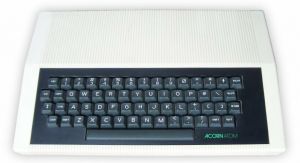
1985 saw the Sinclair and Spectrum names sold to Alan Sugar, who at the time was succeeding with his Amstrad CPC models, mainly by targeting consumers who wanted an incredibly easy to use computer setup, achieved by selling all the CPC range with a bundled monitor, whilst keeping costs low using outsourced manufacture.
The Lineup
Although the Speccy was launched in 1982 and the name sold in 1985, the machine still managed to stay in production for 10 years. Albeit under several make overs and revisions. Here’s the line-up; first we have the original;
Spectrum 16k and 48k models
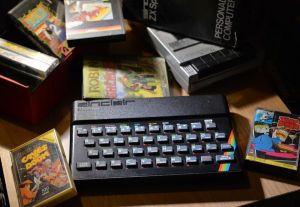
Featuring a rubberised keyboard, which was generally disliked by most. A space “bar” (more like a button) that is only accessible if you have a thumb protruding from the wrong side of your right hand. And also incorporating the now familiar spectrum colour slash along the bottom right of the casing, it was indeed an object to behold.
Owners of the 16kb model could purchase a 32kb RAM upgrade, available as a daughter-board on the first iterations, or the replacement of a few RAM and TTL chips on later versions, both of which meant you probably had to mail your machine off to be upgraded. Hence why most people opted for the 48kb model from day one, even though 32kb RAM packs, which simply plugged into the back were indeed available from 3rd parties. I guess Sinclair was just being awkward by not offering this option themselves?!
Later versions of the 48kb model, actually contained 64kb of memory, but only 48k was made available. The main reason for this was to circumvent the strange tax than Spain instated for computers with less than 64kb of memory. Plus as memory prices had started to drop significantly, the price difference in installation was negligible.
As with later models, the machine featured an “ear” & “mic” socket for a generic external tape player. Along with power supply input and an expansion port bus.
Next we have the…
Spectrum+
This model featured a complete case redesign, including an improved keyboard which was almost as usable as the one I’m typing this script out on. Released in October 1984, this machine looked much more computer like and frankly better, in my opinion.
The + came with a brand new advertising campaign, a higher price tag (at £179.95), annnnd, wait for it…… YES. A reset button! WOAH!
You could also buy a conversion kit to bring your old Speccy up to scratch, as technically the machines were identical. HOWEVER, a failure rate of up to 30% was soon reported, which was significantly higher than the original’s 6%… so although it’s early sales outstripped the original, toy looking device, this declined quite rapidly, leading to surplus stock.
Following on from this we have the best incarnation of the Speccy….
The Spectrum+ 128k
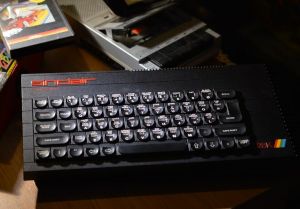
The machine was showcased at the SIMO ’85 trade show in Spain during September ’85, with a price of 44,250 pesetas. But due to the number of unsold Spectrum+ models, Sinclair decided not to start selling in the UK until January 1986 at a price of £179.95 – the same as the + had been.
Looks wise, the machine is almost identical to the +, with the addition of a whopping heat sink on the right hand side (the slatted appearance paving the way for this particular machine’s nickname, “The Toastrack”). It was too cool the 7805 voltage regulator, and replaced the internal heatsink on earlier models.
As I love this one so much, let’s open her up and expose her beautiful components…
As the name rightly dictates, this model had a whopping 128Kb of RAM as standard. BUT also incorporated a AY-3-8912 sound chip (similar to that found in the Atari ST) which also produced sound directly through your television, so the previous need for an inbuilt speaker was gone. Also, the machine had MIDI compatibility, an RS-232 serial port, an RGB monitor port, 32 KB of ROM (up from 20kb in earlier models) and included an improved BASIC editor, which did away with the short-cut key commands. The Z80 processor used in the Spectrum has a 16-bit address bus, which meant only 64 KB of memory could be directly addressed. To enable the extra 80 KB of RAM, Sinclair designers used bank switching so that the new memory would be available as eight pages of 16 KB at the top of the address space. The same technique was also used to page between the new 16 KB editor ROM and the original 16 KB BASIC ROM at the bottom of the address space.
Other tech specs include;
The Zilog Z80 CPU clocked at 3.5469MHz
TEXT MODES of 32 x 24 characters
GRAPHIC MODES of 256 x 192 pixels
8 colours with two tones each (normal & bright)
3 sound channels with 7 octaves
and I have to say, absolutely perfect physical dimensions, of 320 x 150 x 45 mm
This machine was also the first to feature the built in graphical menu on boot, allowing for a much more refined user experience.
Sadly, this and the QL (which is a story for another day), were the last releases for Sinclair before Amstrad bought the name and re-sale rights. Which brings us onto the first of the Amstrad made machines…
The Spectrum +2
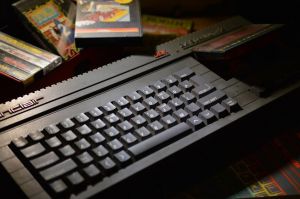
There were also two changes to the ROM, the first was the removal of the “Tape Test” feature from the 128’s menu screen. This was deemed unnecessary as the data-corder was setup for optimal use. The second change was to replace the Sinclair copyright message with that of an Amstrad one. All good you might say, after all Mr. Sugar is known for his desire to preserve his brands and slap his name across all he sees fit. HOWEVER, this did lead to some issues with the odd piece of software. Namely the pieces of software which relied on poking certain points of ROM and relying on the data there to be consistent. Because the Amstrad message changed this ROM character placement slightly, this meant that those programs just bombed out.
The good news was that the retail price dropped to £149, following from Amstrad’s cost cutting and marketing measures. Next we have the….
+2a and +2b
With the a launching in 1987, these slight alterations of the +2 model, were essentially retrograded +3s. Even the option for +3 BASIC is retained in the menu.
The first most noticeable difference is the darkening of the case, which “IMO”, looked a lot better, especially when shipped with the James Bond package.
The reliability of these models is also higher than the original +2 due to the underlying hardware and component changes, especially when it came to the tape deck. The +3 motherboard was designed so it could function without the floppy disk controller logic, replaced instead with the “data-corder”. The +2B had some slight component streamlining, after the manufacturing operation moved from Hong Kong to Taiwan.
These models also feature a Tape/Sound port on the rear, however this is purely to provide output for the onboard sound chip, a welcome function, but not ideal if you’re looking to use an external tape deck (in the event of data-corder failure), or in today’s terms, if you want to load WAV files in. Happily these models can be hacked to make use of the +3’s tape input functionality. Although you’ll need a soldering iron and a steady hand.
Amstrad had advertised an external Floppy drive ability for these models, however the accessory was never released. They obviously felt that their next model was enough. The……
+3
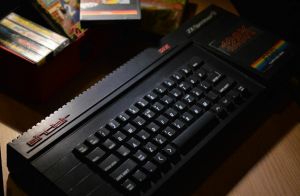
The machine featured a number of design changes over earlier models, and lacked some of the compatibility contingencies built into the +2a and b. 2 more 16kb ROMs were added to house the Disk Operating Systems and the bank switching features were altered allowing more ROM to be paged out. Additionally, the expansion bus was shortened which caused some I/O software issues. This ultimately meant that more of the Spectrum back catalogue was unusable.
Production of the +3 ended in 1990 so it didn’t compete with Amstrad’s own CPC range, however the +2B model continued as it was not deemed as a competitor to their current hardware.
There was also a +3B, which did away with the data-corder circuitry altogether.
Power Supplies
Power supplies for all the machine iterations are your usual brick type affairs. However the +2A/B models had different DIN connectors and branding across the variations.
There were also some known issues with the original Sinclair power supplies. In 1983 it was declared that “up to 14,000” of them could cause electric shocks, a figure later updated to 28,000 by Your Computer magazine. The fault was down to the 240V input track on the power pack’s circuit board running far too close to the 6V output, meaning that a power spike in very humid weather could result in a shock. Sinclair’s Managing Director, Nigel Searle (also featured in Micro Men), admitted that the supplies, which were limited to one batch, “were not checked in detail for safety”. Amazingly Sinclair managed to turn around replacement units in 48 hours. Which given their track record for delivery was mind-blowing.
Clones
There was also a massive market of Sinclair clones, including the licenced Timex machine available in the States. Marketed as the Timex Sinclair 2068, it had improved sound and graphic capability, but unfortunately it mean that the Spectrum’s absolutely MASSIVE back catalogue was largely incompatible. The more I hear stories like this, the more I am absolutely dun-founded at the marketing nativity back in the 80s. When will they learn. IT’s ALL ABOUT THE SOFTWARE.
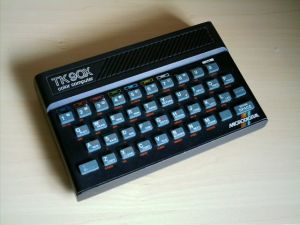
There were also many Russian clones, and a few Spanish iterations, all based on the Spectrum hardware.
And of course more recently, we have machines like the Vega posed for production…. Good grief. Whatever next?
Software
So enough of this technical malarkey. Let’s look at the software, and hear the familiar loading sounds of the Speccy. I’m not sure if Commodore copied Sinclair with the banded, coloured, loading lines, but sadly (you may say thankfully), they did away with the sound of that blissful baud rate. Marking the data streaming into those beautiful RAM chips. Instead, favouring silence or MUSIC!!…MUSIC?! Good god Commodore, what were you thinking! It’s almost as if you thought the SID chip was good or something?!
Thanks to the generation of bedroom coders that the Spectrum enthused, there is an amazing variety of odd, perverse, bewildering, and stupendous software for this little machine. Many of which have definite cult status. The vast majority featured twisted story lines written by the most brilliant 14 year old minds of a generation, and the synopses often retained spelling mistakes, grammar issues or just instructions barely making any lateral sense. Well known classics include Manic Miner, Jet Set Willy, Dan Dare, Dangerous Dan and Skool Daze, but the library is so huge it’s hard to do it justice in this review video.
Anyway, I’ll leave you with some of my favourite games for this marvellous 80’s machine. A machine for me that very much encapsulates the 80’s and, having been raised with one from a very young age, I definitely regard it as probably my favourite machine of all time. Well… maybe…..errrrrrrrrr, certainly of that period at least…. *fades out*
Be assured, I’ll be covering a lot more of both Sinclair and the Spectrum. I have an upcoming video on the “home-made maps” often created by gamers to ease their game-play passage, along with the Sinclair vs. Acorn story and many more in-between. But until then, thanks for watching, subscribe if you so please, and most of all….. stay tuned 🙂 Good night!
—
Did you know you can get DOOM on a Spectrum… Well… Doomish anyway…. Mind Boggling.
Sinclair advert courtesy of archive.org/details/sinclair-user-magazine
Acorn Atom image courtesy of en.wikipedia.org/wiki/Acorn_Atom

Nostalgia Nerd is also known by the name Peter Leigh. They routinely make YouTube videos and then publish the scripts to those videos here. You can follow Nostalgia Nerd using the social links below.
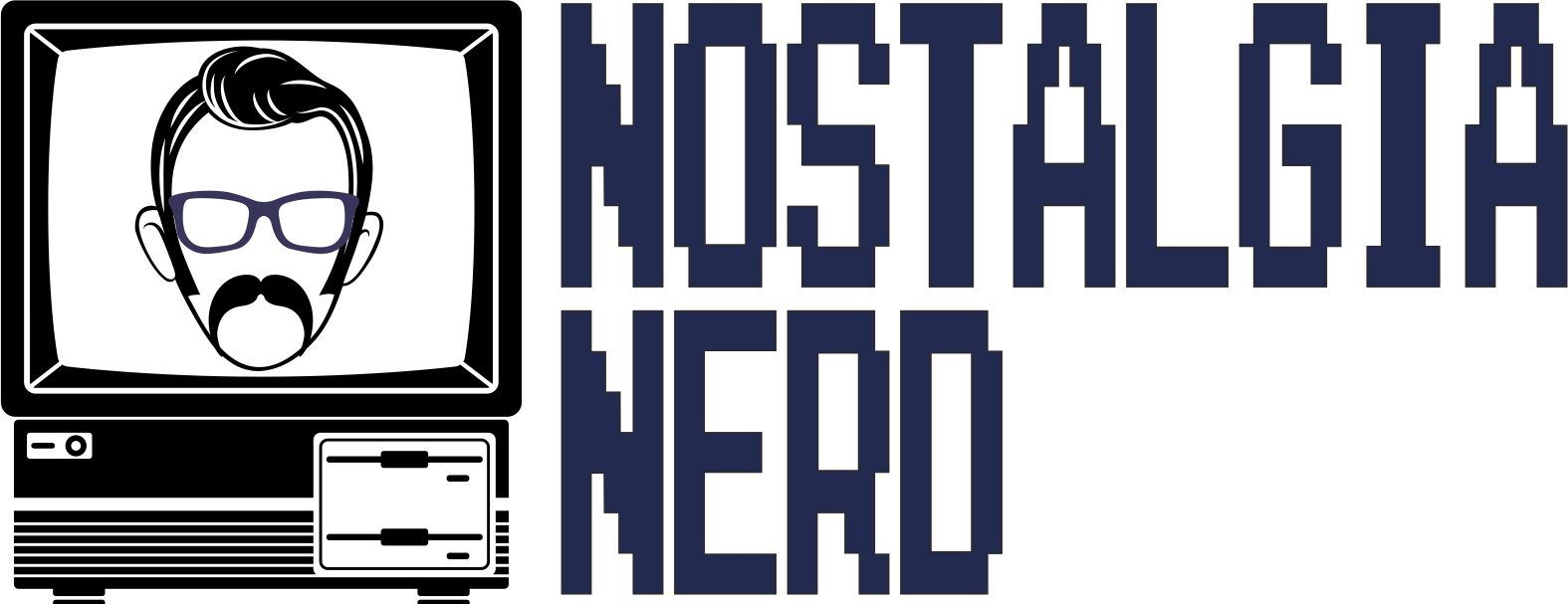
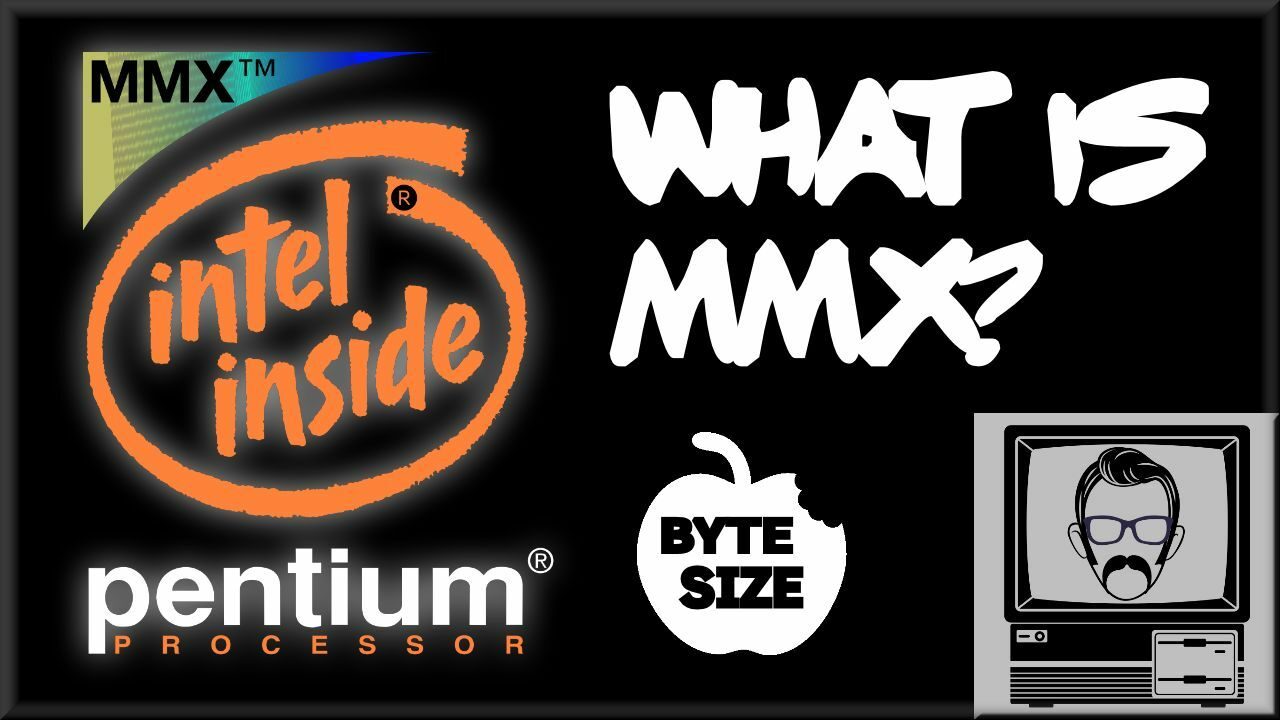
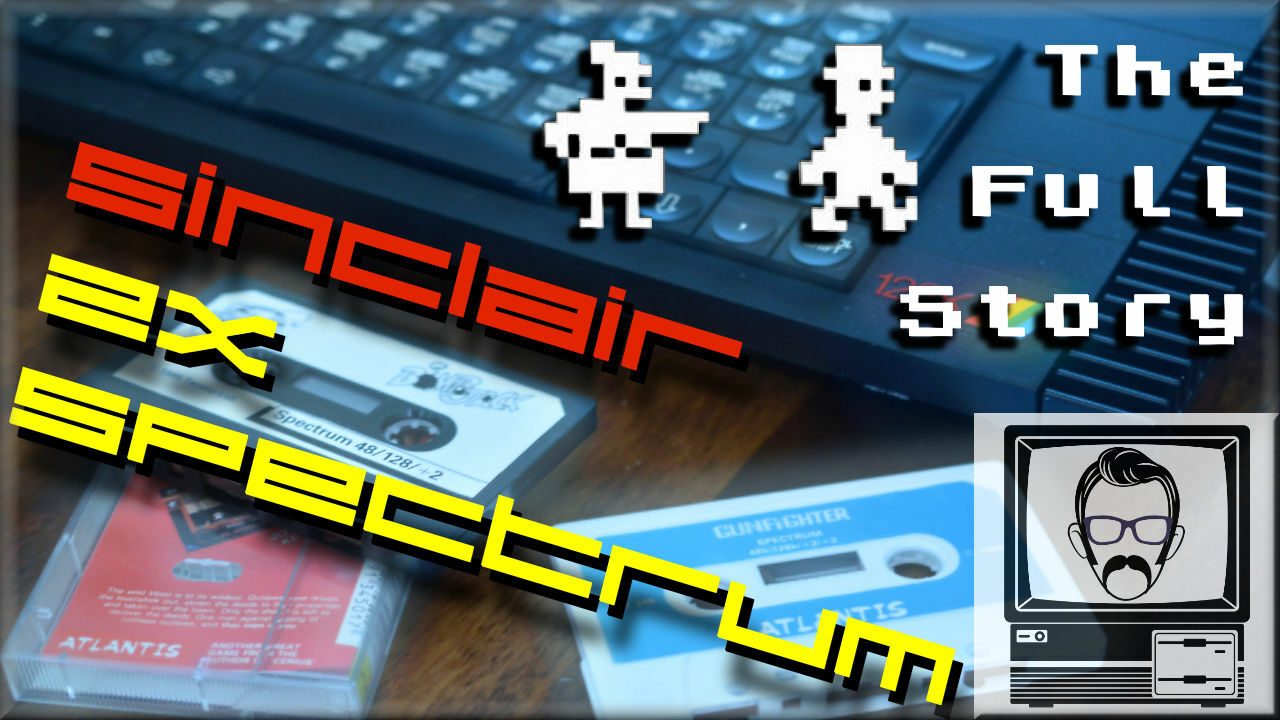
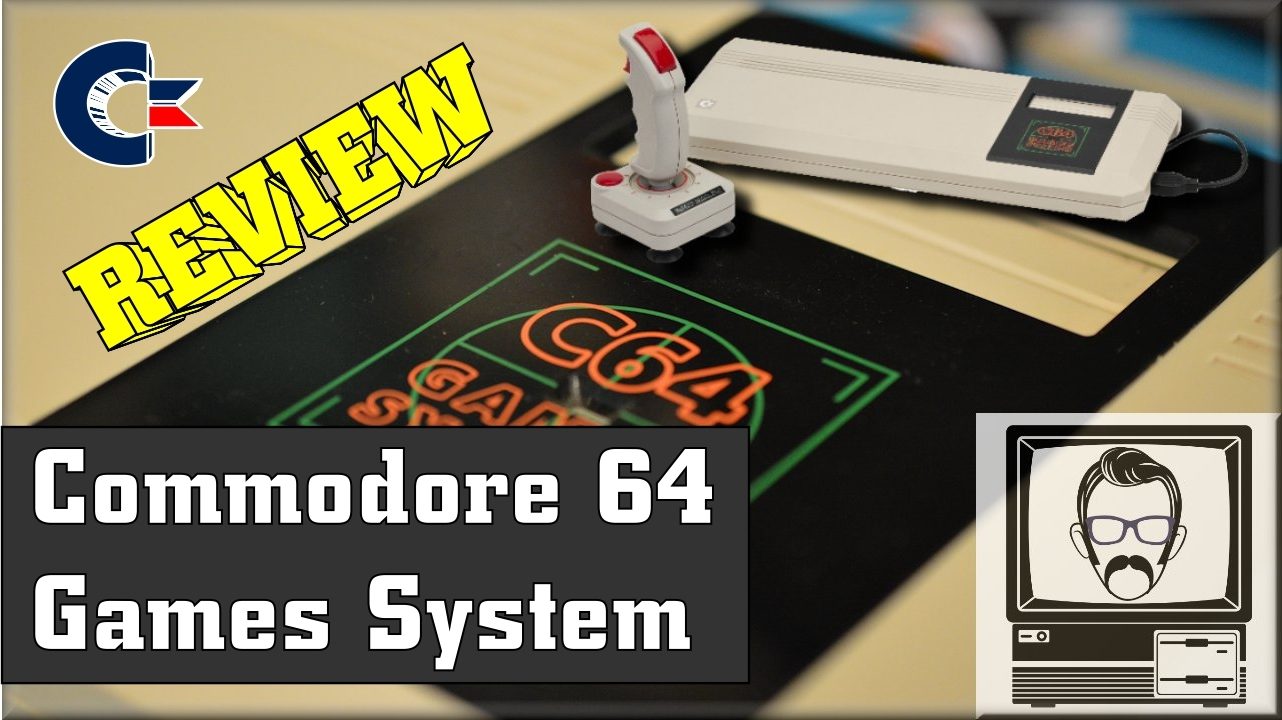

8 Comments
Add Yours →1300 baud is that /8 =162 bytes a second that’s 13 minutes to load a 128k program please do the math or better yet buy a disciple or mb-02+ and don’t forget a multiface128!
ok so there’s a couple of things don’t think the tk90 is a Timex clone think Timex was In n america tk90 was brazilian maybe? think Sinclair tried to sue them 4 copyright… Russian clones well that’s a whole new ball game just got hold of some neoGS if u want one send me your address…
and don’t forget Sam Coupé has hyper loading in the rom so it would’ve only needed a minor modification to the micro command interface to quarter load times from tape and if u put pkunzip on the rom too!
sorry to b so picky it’s just that I remember oceans chase hq took 5mins to load the 128k version and 30 seconds of that is the fastloader code….also I had the at&y speculate saved all 48k to tape in just over 3mins also could save to mdrive hated the plus keyboard as I had a fuller eds so had to plump for an Amstrad grey +2 then a +d n 3 1/2″ disk drive… then a Sam and now a disciple and ten neoGS!
specmate
fds
can’t edit comments after u post them it’s a bit like email addresses that aren’t validated b4 u send the email…dream on…
where d u get the tape baud rate from even multiface had turbo save speed if u kept it attached disciple is 3 secs 48 and about 7 for 128 do u know anything about the micro command interface? it has its own z80 and a mic socket what a pity the rom doesnt let you use a stereo jack split to two mono jacks would halve loading times no?